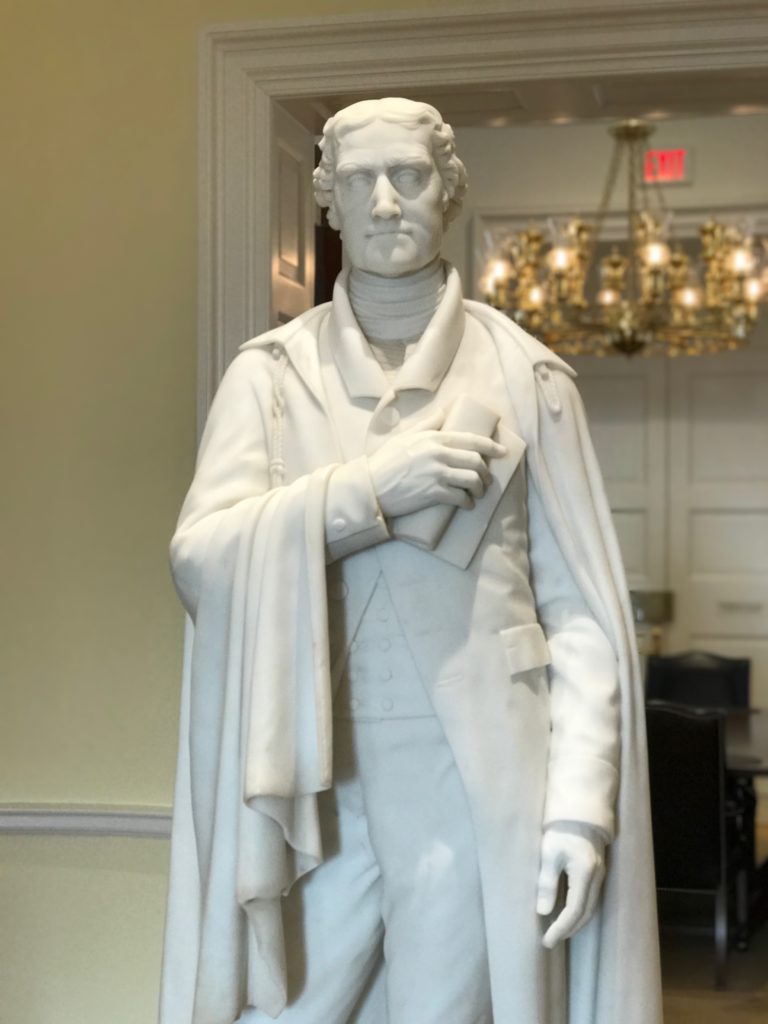
A quick one today. I’ve been up to my eyeballs in various kinds of work, but this was too cool not to write about.
The Glee Club has thousands of known alumni and all of them have some sort of story to their lives. One who I didn’t know much about was Dr. Lawrence Thomas Royster (1874-1953), who was a member in 1893-1894 and 1896-1897. A physician, he taught pediatrics at the University of Virginia Medical School. And he saved Thomas Jefferson… or at least his statue.
While Royster was a student, in October 1895, the annex to Jefferson’s Rotunda, his library and centerpiece for the Academical Village, caught fire and burned. Efforts were made to keep the fire from spreading to the main Rotunda with little success, and the building burned completely, leaving just the brick shell behind. But while the fire progressed, students rescued what they could from the building, including books from the library and, notably, the enormous marble statue of Jefferson that had been given to the University by Alexander Galt in 1861.
Historian Philip Alexander Bruce writes of the rescue:
A few minutes before the explosion occurred, the fine marble figure of Jefferson by Galt had been lowered by ropes to the level of a table hastily pushed forward to catch it. So great was its weight that this support at once gave way under it; but luckily the fall to the floor did not damage the statue. Turned over on its face, it was rapidly dragged to the door opening on the front stairway, and just as there began the attempt to pull it through this narrow exit, the explosion shook the whole building. “The statue,” says Morgan P. Robinson, in his vivid description of the scene, “was gotten out on the staircase, and step by step, it was carried down the western stairs feet foremost. As the base of the statue was eased over each step, it would gather momentum, and gaining speed, would tear off the top edge of the next step, while, under the combined weight of the statue and twenty to thirty of the students, the whole staircase would tremble. It is conservatively estimated that it took from ten to fifteen minutes only to remove the statue from the library to the Lawn.”
Bruce, History of the University of Virginia, Vol. IV, p. 260, 1922.
The story is well known to me, but until today, I didn’t know that a Glee Club member was among the students who rescued the statue. Then, while checking my sources on Royster’s photo, I found the entry for the photo at the UVA Library and read the following:
A native of Norfolk, Virginia, where he was born in 1874, Dr. Royster received his prepatory education at Norfolk Academy and entered the University in 1892. In the memorable fire of 1895 he was one of the group of students who entered the burning Rotunda and lifted the Galt statue of Jefferson from its pedestal, drew it through the room on a mattress, safely eased it down the curving stair, and deposited it on the Lawn. The only damage to the statue was a slight chipping of the edge of the drapery.
Bulletin of the UVa Medical School and Hospital, Fall 1942.
So, Royster was one of those responsible for saving the statue of Jefferson. And it’s interesting to note that, in this age of iconoclasm, the statue was not one of the post-Reconstruction Civil War statues. Instead, Alexander Galt, Jr., a native Virginian who took up sculpture after being inspired by the work of Houdon and studied in Florence, was commissioned to create the statue for $10,000, completing it in 1861. (Galt died in 1863 of smallpox while serving as aide to Virginia’s Confederate governor John Letcher.)
